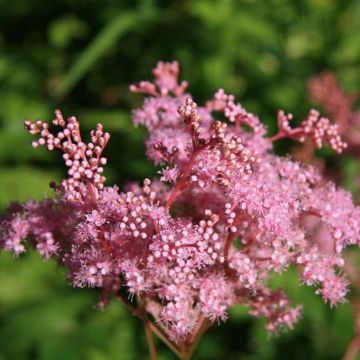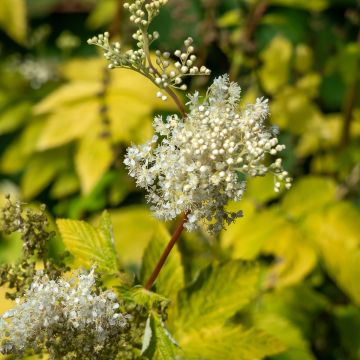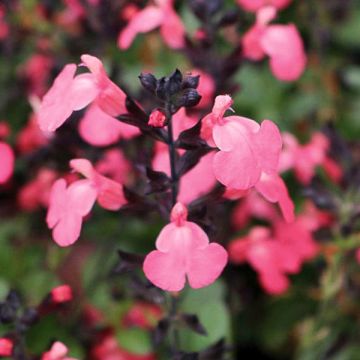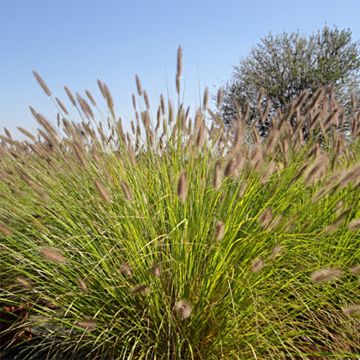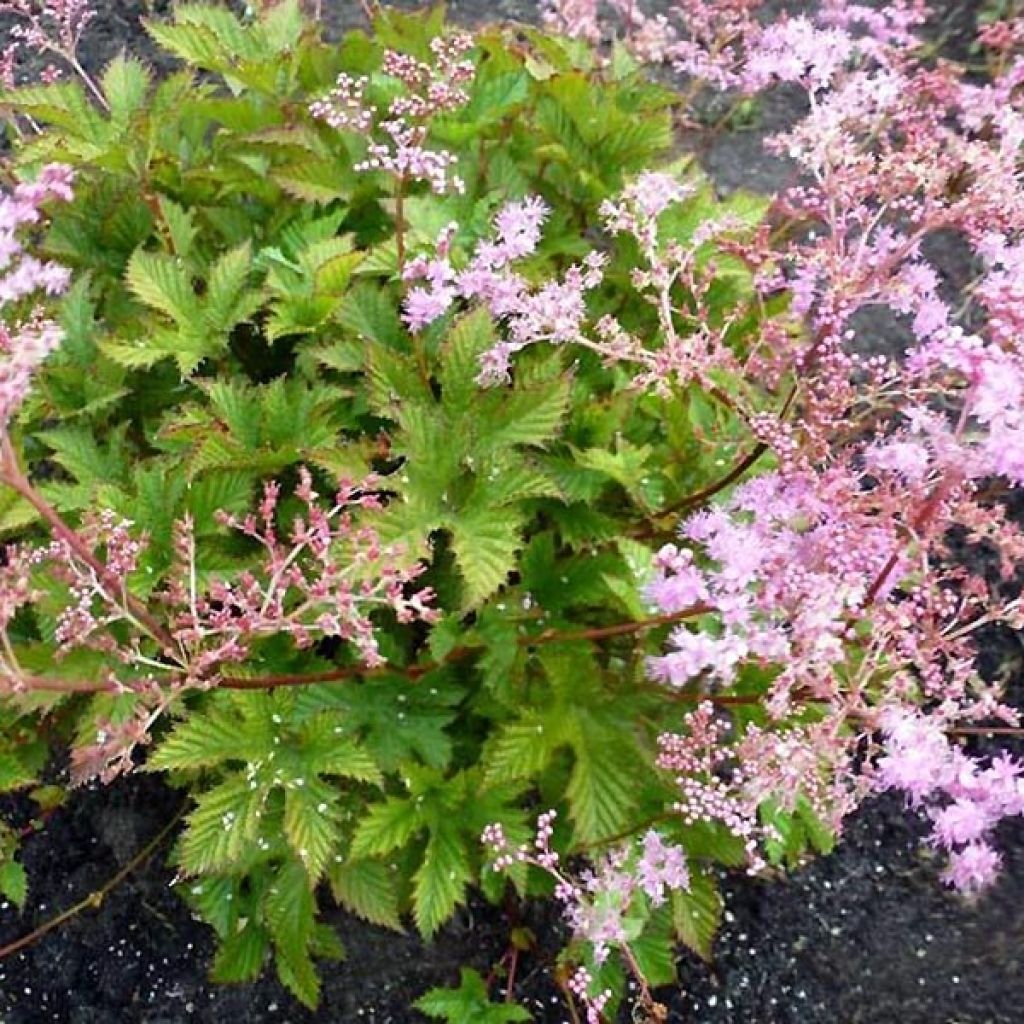

Filipendula ulmaria Rosea
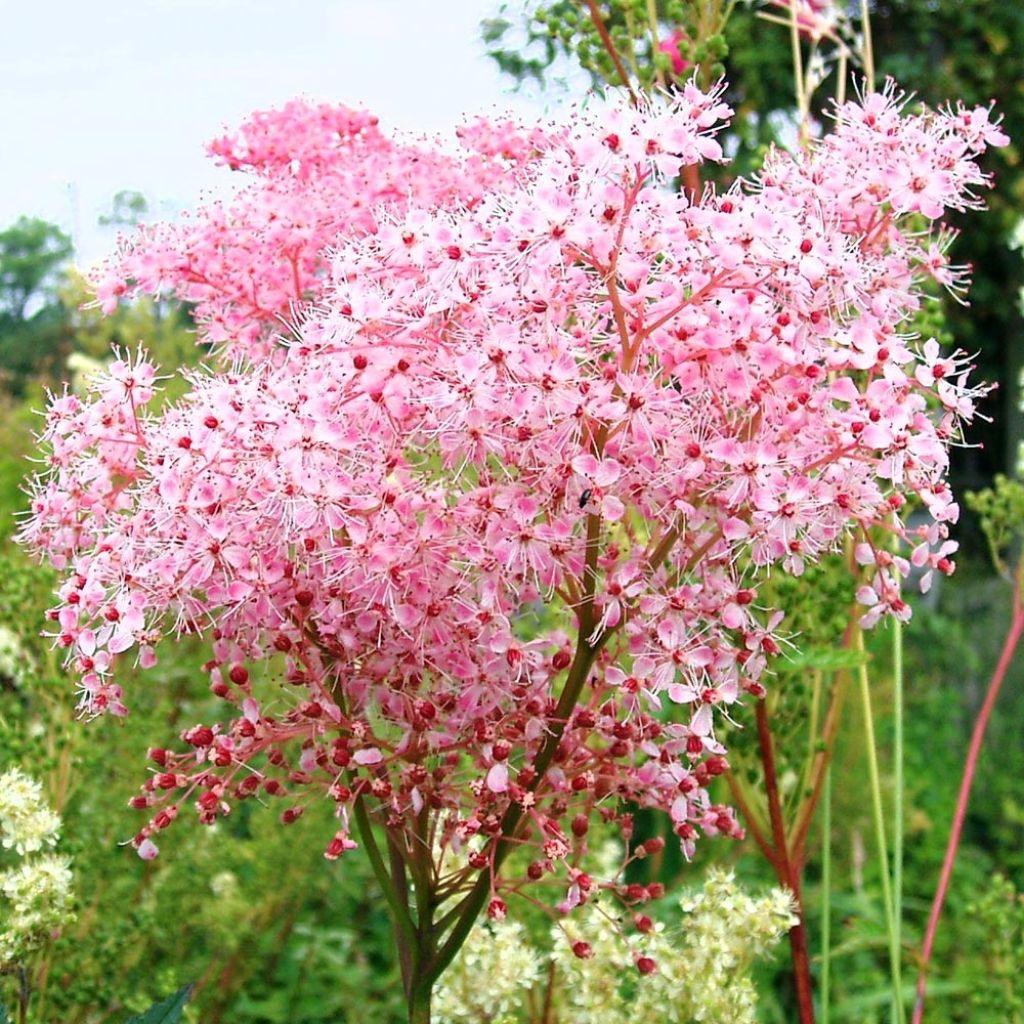

Filipendula ulmaria Rosea
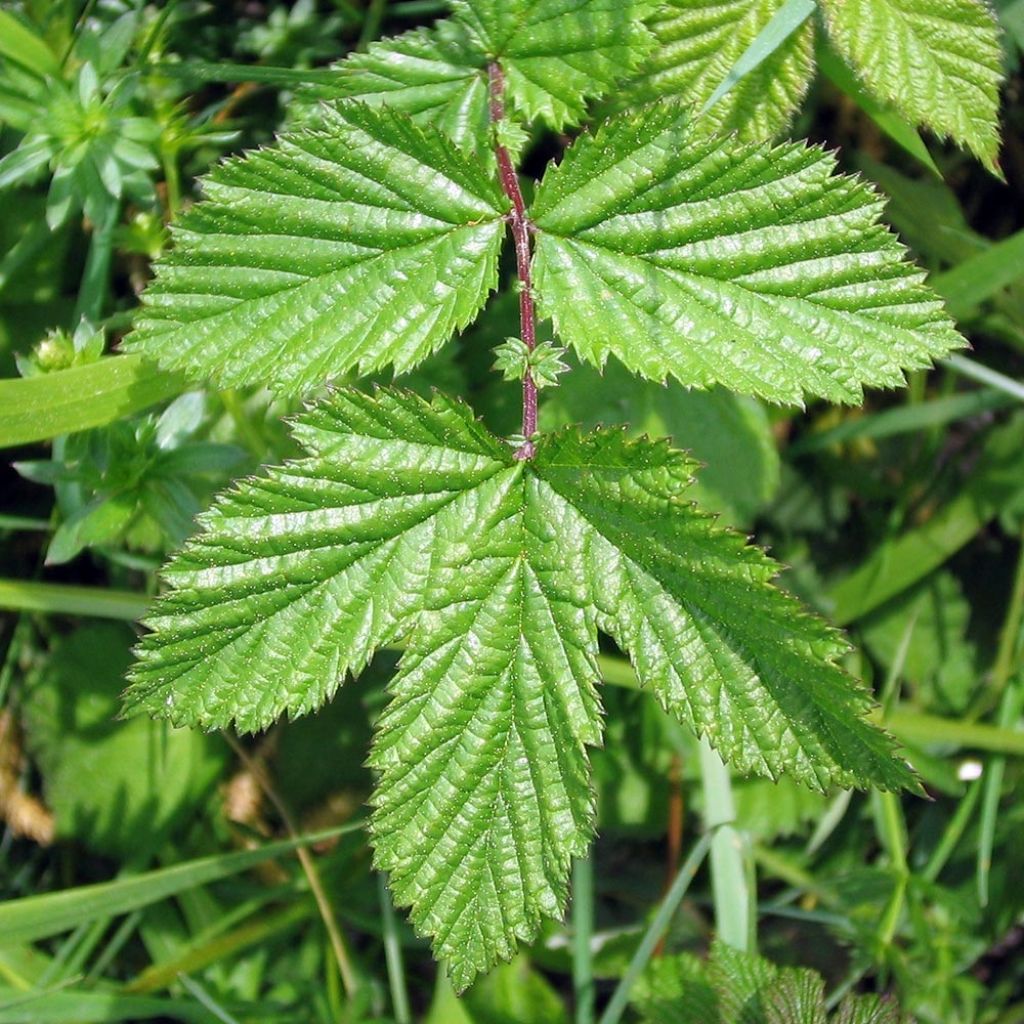

Filipendula ulmaria Rosea
Filipendula ulmaria Rosea
Filipendula ulmaria Rosea
Meadowsweet, Queen of the Meadow, Meadow-wort, Meadow Queen
Why not try an alternative variety in stock?
View all →This plant carries a 12 months recovery warranty
More information
We guarantee the quality of our plants for a full growing cycle, and will replace at our expense any plant that fails to recover under normal climatic and planting conditions.
From €5.90 for pickup delivery and €6.90 for home delivery
Express home delivery from €8.90.
Does this plant fit my garden?
Set up your Plantfit profile →
Description
The Filipendula ulmaria 'Rosea' is the pink-flowered form of meadowsweet, a beautiful European wild plant that we encounter in the wet and sunny places of our countryside. Even more romantic and airy, its light pink and airy panicles, called corymbs, attract a large number of pollinating insects from June to August. Ideal for wet areas and water edges, it is both very elegant, robust, and hardy, suitable for different types of gardens and requires no maintenance.
Meadowsweet is a plant of the rose family, just like spireas and potentillas. This Eurasian plant is native to wet places such as stream banks or ditches, in open and sunny spaces. This plant has been known for centuries for its many virtues. First, aromatic: it perfumes wines, beers, and mead. But also medicinal: it is used as an analgesic, anti-inflammatory, and diuretic. In our gardens, it is mainly decorative, and its pink-flowered form is even more so. The Filipendula ulmaria 'Rosea' forms an upright clump of about 60 cm (24in) in all directions. From its rhizomatous stump start long branching stems, bearing large shiny leaves of a bright green. These are odd-pinnate, composed of an odd number of leaflets, clearly serrated and pinnate, whose wavy surface pleasantly reflects the light. At the end of the stems, airy corymbs sway in the wind. They consist of multiple small light pink and single flowers, slightly fragrant, with prominent stamens that give it a lot of charm.
The 'Rosea' meadowsweet is a medium-sized perennial that will bring an airy and wild presence to flower beds. It is resistant to cold and appreciates both sunny and semi-shaded exposures. Its only requirement is to be planted in consistently moist to wet soil. It can be placed anywhere in flower beds, behind small bushy plants, such as Perennial Geraniums and Heucheras, and among tall ones, like Monkshoods, comfreys, and Goat's Beards. It can also be associated with white varieties such as 'Plena' double-flowered Filipendula, or with purple perennials like purple astilbes or spike veronicas that also appreciate moist soils.
Report an error about the product description
Filipendula ulmaria Rosea in pictures






Flowering
Foliage
Plant habit
Botanical data
Filipendula
ulmaria
Rosea
Rosaceae
Meadowsweet, Queen of the Meadow, Meadow-wort, Meadow Queen
Cultivar or hybrid
Other Filipendula
Planting and care
The Filipendula ulmaria 'Rosea' thrives in moist to wet soil when planted in spring or autumn. It is a low-maintenance, hardy plant that will tolerate average soil, even heavy soil, as long as it remains moist. However, it performs best in fertile and humus-rich soil, in full sun or partial shade. During particularly dry summers, we recommend closely monitoring the watering to prevent it from becoming fragile, as this would make it susceptible to mildew. Simply cut back the flower stalks at the end of summer for maintenance. Once dried, keep them in a tin or cardboard box to make herbal teas for temporary headaches or stomachaches.
Planting period
Intended location
Care
This item has not been reviewed yet - be the first to leave a review about it.
Summer flowering perennials
Haven't found what you were looking for?
Hardiness is the lowest winter temperature a plant can endure without suffering serious damage or even dying. However, hardiness is affected by location (a sheltered area, such as a patio), protection (winter cover) and soil type (hardiness is improved by well-drained soil).

Photo Sharing Terms & Conditions
In order to encourage gardeners to interact and share their experiences, Promesse de fleurs offers various media enabling content to be uploaded onto its Site - in particular via the ‘Photo sharing’ module.
The User agrees to refrain from:
- Posting any content that is illegal, prejudicial, insulting, racist, inciteful to hatred, revisionist, contrary to public decency, that infringes on privacy or on the privacy rights of third parties, in particular the publicity rights of persons and goods, intellectual property rights, or the right to privacy.
- Submitting content on behalf of a third party;
- Impersonate the identity of a third party and/or publish any personal information about a third party;
In general, the User undertakes to refrain from any unethical behaviour.
All Content (in particular text, comments, files, images, photos, videos, creative works, etc.), which may be subject to property or intellectual property rights, image or other private rights, shall remain the property of the User, subject to the limited rights granted by the terms of the licence granted by Promesse de fleurs as stated below. Users are at liberty to publish or not to publish such Content on the Site, notably via the ‘Photo Sharing’ facility, and accept that this Content shall be made public and freely accessible, notably on the Internet.
Users further acknowledge, undertake to have ,and guarantee that they hold all necessary rights and permissions to publish such material on the Site, in particular with regard to the legislation in force pertaining to any privacy, property, intellectual property, image, or contractual rights, or rights of any other nature. By publishing such Content on the Site, Users acknowledge accepting full liability as publishers of the Content within the meaning of the law, and grant Promesse de fleurs, free of charge, an inclusive, worldwide licence for the said Content for the entire duration of its publication, including all reproduction, representation, up/downloading, displaying, performing, transmission, and storage rights.
Users also grant permission for their name to be linked to the Content and accept that this link may not always be made available.
By engaging in posting material, Users consent to their Content becoming automatically accessible on the Internet, in particular on other sites and/or blogs and/or web pages of the Promesse de fleurs site, including in particular social pages and the Promesse de fleurs catalogue.
Users may secure the removal of entrusted content free of charge by issuing a simple request via our contact form.
The flowering period indicated on our website applies to countries and regions located in USDA zone 8 (France, the United Kingdom, Ireland, the Netherlands, etc.)
It will vary according to where you live:
- In zones 9 to 10 (Italy, Spain, Greece, etc.), flowering will occur about 2 to 4 weeks earlier.
- In zones 6 to 7 (Germany, Poland, Slovenia, and lower mountainous regions), flowering will be delayed by 2 to 3 weeks.
- In zone 5 (Central Europe, Scandinavia), blooming will be delayed by 3 to 5 weeks.
In temperate climates, pruning of spring-flowering shrubs (forsythia, spireas, etc.) should be done just after flowering.
Pruning of summer-flowering shrubs (Indian Lilac, Perovskia, etc.) can be done in winter or spring.
In cold regions as well as with frost-sensitive plants, avoid pruning too early when severe frosts may still occur.
The planting period indicated on our website applies to countries and regions located in USDA zone 8 (France, United Kingdom, Ireland, Netherlands).
It will vary according to where you live:
- In Mediterranean zones (Marseille, Madrid, Milan, etc.), autumn and winter are the best planting periods.
- In continental zones (Strasbourg, Munich, Vienna, etc.), delay planting by 2 to 3 weeks in spring and bring it forward by 2 to 4 weeks in autumn.
- In mountainous regions (the Alps, Pyrenees, Carpathians, etc.), it is best to plant in late spring (May-June) or late summer (August-September).
The harvesting period indicated on our website applies to countries and regions in USDA zone 8 (France, England, Ireland, the Netherlands).
In colder areas (Scandinavia, Poland, Austria...) fruit and vegetable harvests are likely to be delayed by 3-4 weeks.
In warmer areas (Italy, Spain, Greece, etc.), harvesting will probably take place earlier, depending on weather conditions.
The sowing periods indicated on our website apply to countries and regions within USDA Zone 8 (France, UK, Ireland, Netherlands).
In colder areas (Scandinavia, Poland, Austria...), delay any outdoor sowing by 3-4 weeks, or sow under glass.
In warmer climes (Italy, Spain, Greece, etc.), bring outdoor sowing forward by a few weeks.


































